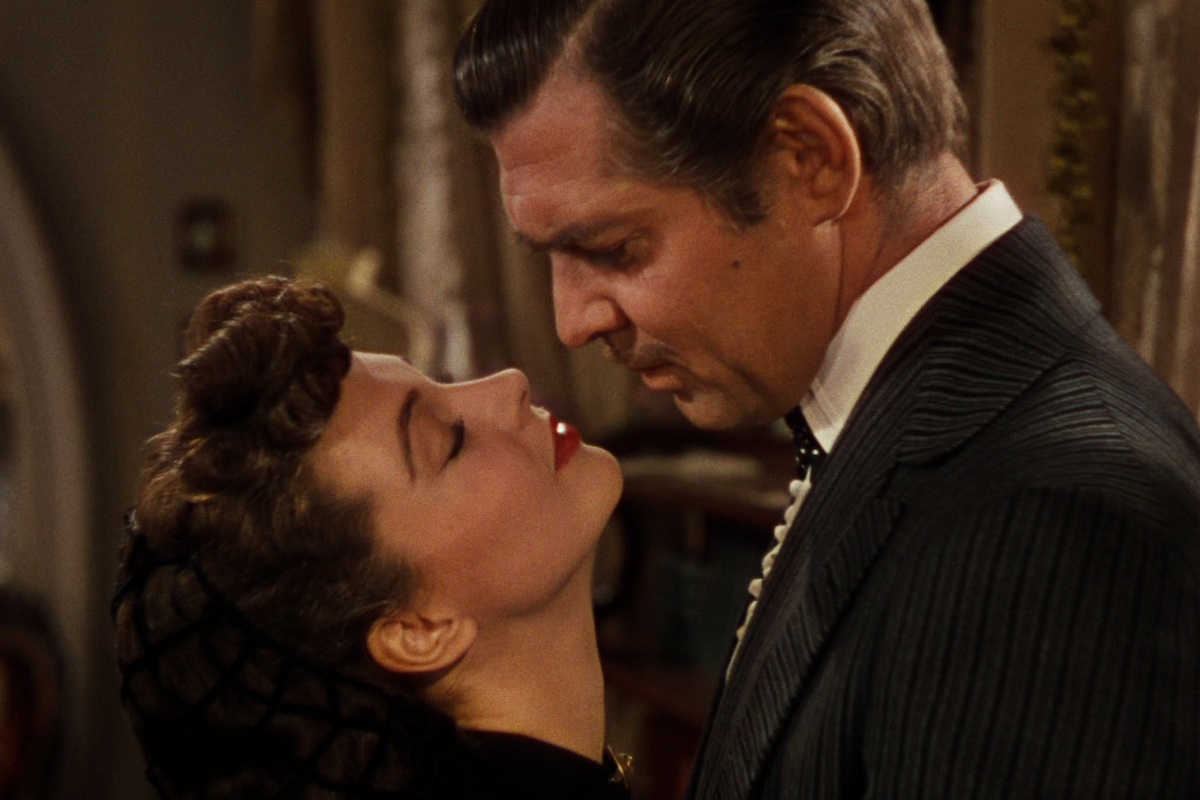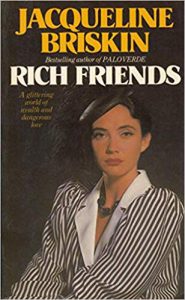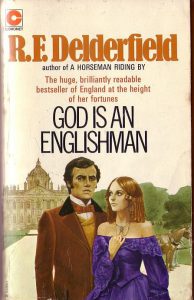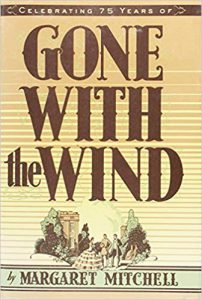Books
The Decline of the Great American Family Saga

In February, the Atlantic published a much discussed essay by David Brooks entitled “The Nuclear Family Was a Mistake.” Brooks noted that the conditions that once made nuclear families viable—strong unions, plenty of jobs that paid living wages, inexpensive housing and transportation and education costs, stay-at-home mothers, high numbers of churchgoers—were products of a very brief window of time that only lasted from about 1950 until about 1965. For centuries prior to that, Americans tended to divide themselves into extended families, vast networks of grandparents, aunts, uncles, and other relatives, all of whom remained connected to one another by some sort of family enterprise. Here’s how Brooks sums up the extended American family:
In 1800, three-quarters of American workers were farmers. Most of the other quarter worked in small family businesses, like dry-goods stores. People needed a lot of labor to run these enterprises. It was not uncommon for married couples to have seven or eight children. In addition, there might be stray aunts, uncles, and cousins, as well as unrelated servants, apprentices, and farmhands…Extended families have two great strengths. The first is resilience. An extended family is one or more families in a supporting web. Your spouse and children come first, but there are also cousins, in-laws, grandparents—a complex web of relationships among, say, seven, 10, or 20 people. If a mother dies, siblings, uncles, aunts, and grandparents are there to step in. If a relationship between a father and a child ruptures, others can fill the breach. Extended families have more people to share the unexpected burdens—when a kid gets sick in the middle of the day or when an adult unexpectedly loses a job.
The nuclear family, on the other hand, is described by Brooks as an intense relationship among only about four people living under one roof, usually a husband, a wife, and their two children. Since the late 1960s, rising rates of divorce and single-parenthood, plummeting birthrates, a decline in churchgoing, and a society that celebrates individuality rather than collective effort, have caused the nuclear family to become ever more scarce in America. Brooks makes a convincing case and offers plenty of examples of how this has altered the American landscape, for both better and worse. One thing he doesn’t examine is how this change has altered American literature, and in particular popular fiction.
I was born in 1958 into what would become a fairly large nuclear family—husband, wife, six children. My parents were married in 1954 and remained married until April of 2019, when my father died. My father, an accountant, was always the breadwinner; my mother was always the homemaker. My mother was a pop fiction junkie and I was my mother’s son. I was raised on the popular fiction of the 1960s and 1970s, and much of that fiction was a celebration of the American extended family. The mid-to-late 20th century was a golden age for the American family saga. Among the best-known of these were titles such as Alex Haley’s 1976 bestseller Roots, Mario Puzo’s The Godfather, Irwin Shaw’s Rich Man, Poor Man and its sequel, Herman Wouk’s The Winds of War and its sequel, Chaim Potok’s My Name is Asher Lev and its sequel, and Bloodline by Sidney Sheldon. Other very popular series of American family sagas were John Jakes’s The Kent Family Chronicles, an eight-volume series written to commemorate the American Bicentennial, Howard Fast’s chronicles of the fictional Lavette Family, a series of six books, including such bestsellers as The Immigrants and Second Generation, which followed an immigrant family’s rags-to-riches rise in America, and Lonnie Coleman’s Beulah Land trilogy, which chronicled a slave-owning plantation-dwelling family in the American South.

All of the above titles were written by men, but plenty of women writers were also prominent in the golden age of the American family saga. Belva Plain’s five-book chronicle of the Werner family got off to an auspicious start when Evergreen, the first book in the series, became the sixth bestselling novel of 1978. Cynthia Freeman wrote numerous bestselling family sagas, such as A World Full of Strangers (1975), Portraits (1979), and No Time For Tears (1981). Jacqueline Briskin wrote some highly entertaining family sagas, including her Van Vliet family trilogy, which comprised Rich Friends (1976), Paloverde (1978), and The Onyx (1982). Ruth Beebe Hill’s 1979 bestseller Hanta Yo was a massive single-volume saga depicting the lives of two families of Teton Sioux Indians. Helen Hooven Santmyer’s 1984 bestseller …And Ladies of the Club, which is even more massive than Hanta Yo, is a saga that follows the fates of several small-town Ohio women and their families from 1868 to 1930.

All of the above are American family sagas, but in the mid-20th century plenty of family sagas from other countries also sold well in America. These included Colleen McCullough’s The Thorn Birds (Australia), James Clavell’s so-called Asian Saga, which included such bestsellers as Shogun and Noble House, Vivian Stuart’s 12-volume historical saga The Australians, written under the pseudonym William Stuart Long, R. F. Delderfield’s two-volume saga of the Swann family (God Is an Englishman, Theirs Was the Kingdom) whose titles suggest their geographical setting, and even Jean Auel’s Earth’s Children series, six massive novels about various families of Cro-Magnons and Neanderthals co-existing in the Upper Paleolithic period in what is now Europe.
But the days when realistic family sagas regularly populated American bestseller lists are long gone. Nowadays most of the multi-volume sagas that hit the bestseller lists take place in fantasy worlds such as those conjured up by George R. R. Martin, J. K. Rowling, and Suzanne Collins. Twenty-first century bestseller lists tend to be glutted with thrillers, fantasies, children’s books, and 50 Shades of Grey. The year 2012 was fairly typical. Here are the 10 bestselling fictions of that year:
- Fifty Shades of Grey by E. L. James
- The Hunger Games by Suzanne Collins
- Fifty Shades Darker by E. L. James
- Fifty Shades Freed by E. L. James
- Catching Fire by Suzanne Collins
- Mockingjay by Suzanne Collins
- Diary of a Wimpy Kid: The Third Wheel by Jeff Kinney
- Fifty Shades trilogy box set by E. L. James
- The Mark of Athena by Rick Riordan
- Gone Girl by Gillian Flynn
There’s not a single 20th century-style American saga in the bunch. The last book of that kind to hit Publishers Weekly’s year-end list of the 10 bestselling fictions was probably Heaven and Hell, the final volume in John Jakes’s North and South trilogy, which charts the fates of the Main and Hazard families (one from South Carolina and one from Pennsylvania) from 1842 until 1883, with an emphasis on the Civil War era. While massive multi-generational American family sagas do still get published, they don’t resonate with the book-buying public the way they did in the middle of the 20th century. This isn’t necessarily a bad thing, but it definitely seems to be related to the fact that American families have changed so drastically over the last half-century, as chronicled by David Brooks in his Atlantic essay.
It was still possible for an American reader of my mother’s generation (born 1932) to see herself as part of a vast genealogical continuum stretching back to the day when the first of her family arrived in America. Americans born in the first three decades of the 20th century were mostly either the children or grandchildren of immigrants, if they weren’t actual immigrants themselves. More importantly, they had much larger families back then, and people were more likely to move away from their hometowns than they are now, so that even if none of your immediate family members had made much of a name for himself in your hometown, you probably had a relative somewhere who was thriving in some enterprise or another. Even if you rarely heard from this person, his (or her) existence allowed you to think of yourself as part of a prominent family.
I didn’t realize it when I was devouring American family sagas in the 1970s and ’80s, but not only was the era of the big sprawling extended American family, like those chronicled in the works of Howard Fast and John Jakes, long past, but its successor, the American nuclear family, was fading into history as well. Today, the American family seems to be a mixed bag of singletons, empty-nesters, blended families, DINKs (double-income, no kids), and POSSLQs (persons of the opposite sex sharing living quarters). It would be impossible to turn the lives of my father, myself, and my stepdaughter Andrea into a cohesive three-generational family saga. Andrea and my father met only once, in 1980, at my wedding, when she was 14 and he was 48. He spent almost his entire life in Portland, Oregon, and my little blended family bounced around among various northern California towns for many years after my wife and I married.
Between 1980 and 2000, my father made only sporadic trips to California. By 1986, Andrea was married and off living with her husband, so she never saw my father again. After 9/11, my father swore off air travel and never visited California again. He was a very successful CPA and a partner in a firm he had helped found. Andrea has run her own very successful notary business for 20 years or more. I, on the other hand, am one of the world’s most insignificant freelance writers. All three of us have had interesting lives, but they don’t connect in the way of good fiction. As much as he might have liked to, my father couldn’t help me in my career, because he had no connections in the publishing world and knew nothing about it. I loved my father and I love my stepdaughter but ours are three discrete lives that never really connected professionally.

Many great family sagas, like Gone With the Wind or Hawthorne’s The House of the Seven Gables, revolve around impressive family homes that are passed down from generation to generation. But, except perhaps among America’s one-percenters, that kind of thing doesn’t happen in American families anymore. When my father died, his fairly humble home was sold and the proceeds put into a trust that pays for my mother’s tenancy in a long-term memory-care facility. My stepdaughters are likely to inherit nothing but debts from their mother and me. Other great family sagas, such as God Is an Englishman, revolve around a family business that is handed down from generation to generation. But that doesn’t seem to happen in real life much these days either, at least not among middle-class Americans. I don’t personally know anyone who took over a family business from his parents or who plans to leave one to his children. Other sagas describe families in which the sons (and sometimes the daughters) follow their fathers into some great institution, such as the military, the church, the government, academia, etc. But, in real life, that doesn’t seem to happen as much as it once did.
This isn’t to say that contemporary working- and middle-class Americans don’t help out their grown children any longer. Many of them do. Plenty of twenty- and thirty-something Americans still live at home with their parents. And plenty of older Americans are helping to raise their own grandchildren. But they simply don’t have the wherewithal to pass along real estate or businesses to their offspring that will assure them of a strong financial foundation. A lot of those fifty-something parents with twenty-something children still at home are now also looking after (and often financially supporting) their eighty-something parents, a development that makes things even more financially precarious for American families. These arrangements, usually born of necessity, are not generally the stuff of great literary sagas. If they are the stuff of any literary genre at all, it’s the Wal-Mart realism of working-class writers like Raymond Carver, Larry Brown, Bobbie Ann Mason, and their literary offspring, most of whom write short stories rather than novels.
As Brooks notes in his essay, today’s Americans tend to gravitate towards families of choice rather than families of blood relations. This is certainly true of me. I have kept a diary for years but it contains almost no mention of any of my blood relatives. The main characters in my diary are me, my wife, and our friends. Family members, other than my wife, are all bit players in my diaries. I have five living siblings. I love them and am on good terms with all of them, but I rarely see any of them. I’m sure my diaries contain more mentions of my cats than of my brothers and sisters and parents. And as for my cousins, well, I haven’t had any meaningful interaction with any of them since I was a teenager. Several of them have died, but I didn’t hear about any of these deaths until months later. I know more about the lives of my pub-trivia teammates than I do about the lives of most of my blood relations. And I don’t think I’m alone in this respect.
As a young man, I loved reading multi-generational family sagas. I figured that by the time I was 60 I’d be able to look back on my life and see it as just one part of a vast family epic, a continuous story that took in the lives of my parents and my grandparents as well as my own offspring, a long line of people bound by blood and marriage and perhaps some shared family enterprise. Now I am 61, and I don’t really feel as though I am a part of some vast genetic continuum. Like a lot of working-class Americans, my wife and I have had to hustle just to keep our mortgage paid and some sort of health insurance coverage going. We are fortunate that neither my parents nor my wife’s two grown daughters have ever needed our financial assistance, because we certainly wouldn’t have been much help to them.
David Brooks explains how this happened. The constellation of forces that had briefly shored up the nuclear family began to fall away, and the sheltered family of the 1950s was supplanted by the stressed family of every decade since. Some of the strains were economic. Starting in the mid-Seventies, young men’s wages declined, putting pressure on working-class families in particular. I currently work for “the richest man in modern history,” according to Forbes. I’m grateful for my part-time job at an Amazon warehouse. I enjoy the work and I need the money. But it’s not the kind of unionized job that provided stability and benefits and a healthy pension to many a head of household during the brief heyday of the American nuclear family. It’s a nice gig that, combined with various other gigs that my wife and I juggle, keeps us afloat these days.
This isn’t exactly how I envisioned my seventh decade of life would play out. But it’s not as if my wife and I didn’t try to establish successful family enterprises. For a couple of years in the 1980s we ran our own freelance title-search business. Oil and gas companies, loan companies, and others would hire us to provide them with a basic title report on a given piece of land. Every weekday we’d visit county courthouses all over northern California searching title records and compiling reports that provided details about each piece of property: legal description, property tax info, vested ownership, ownership of the mineral rights, easements, liens, and other encumbrances. We hoped to build the business enough that we’d eventually be able to stay at home and send others out into the field to do the title searches, but that never happened. Later, for about five years, we operated our own antiques business out of an antiques co-op in Sacramento. That, too, we hoped to grow into a much larger operation, but we opened for business in the midst of the Great Recession and after half a decade or so we were forced to throw in the towel. Both my wife and I have written novels, but neither of us ever had any success publishing them. And so now, when many others our age are preparing for retirement, we’re still out there hustling in the gig economy.
I’m not complaining about any of this. My wife and I are happy and, by and large, we’ve had a fascinating life together. But the inability of people like us to get ahead financially, leaves us somewhat cut off from our families. We’ve had to forego attending various reunions and weddings and Thanksgiving gatherings just because we couldn’t afford the time off or the travel costs. And I suspect we’re not alone in this respect, either. Fortunately, modern technology allows us to still keep in touch with distant relatives without having to travel all over the country. But texts and emails are not the stuff of great family sagas. Our story has been a good one, which I’ve documented in dozens of personal essays published in places such as the New York Times’ Modern Love column and elsewhere. My father’s life was a pretty interesting one also. And so too is my stepdaughter Andrea’s. But they are three different standalone stories.
These days American family stories tend to be about small discrete households rather than vast sprawling networks of blood relatives who are constantly weaving in and out of each other’s orbits, wrestling for control of family assets, building businesses together, purchasing family vacation homes together, uniting against hostile outsiders, hiring each other’s children, and all the other activities that used to characterize stories about the rags-to-riches rise of an extended American family. I’m okay with that. But the American bestseller lists of the 21st century seem to be much poorer for it. Today, they consist mainly of legal thrillers, fantasy epics, and the 32nd installment of some name-brand author’s crime-novel franchise. I’m old enough to remember when the multigenerational American family saga was still a publishing-industry powerhouse. Now it is rapidly going the way of the American nuclear family itself.





